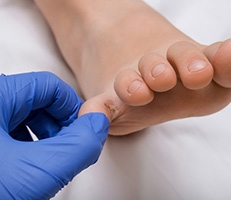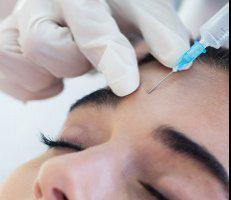When you hear about people who struggle with unexpected hair loss, male-pattern baldness is probably the first thing you think of. Although it’s true that a relatively high proportion of men do experience some degree of balding as they age, hair loss affects women, too, and it can happen at any age. At Indigo Dermatology in Melbourne, FL, Tampa, FL & Palm Bay, FL, dermatologist Dr. Sumeet Thareja provides platelet-rich plasma (PRP) injections to help patients restore lost hair safely and effectively. To learn more, call or book your appointment online today.
PRP Specialist
PRP Q&A
What causes hair loss?
On average, most people shed 50-100 hairs every day. This natural process normally doesn’t cause noticeable thinning because new hair is constantly growing to replace what falls out.
Hair loss can occur, however, when the growth-shedding cycle is somehow interrupted, or if hair follicles somehow become damaged and are covered by scar tissue.
Genetic predisposition, or family history, is by far the most common cause of hair loss. Other common reasons for unexpected hair loss include:
- Female hormonal changes
- Certain medical conditions
- Certain prescription drugs
- Chronic psychological stress
Male-pattern baldness, which is heavily influenced by genetics and usually involves either a bald spot or a receding hairline, can begin as early as puberty. Female-pattern baldness takes the form of thinning hair.
What is platelet-rich plasma therapy?
Platelet-rich plasma (PRP) therapy is a proactive, therapeutic hair restoration treatment for male and female patients who are experiencing hair loss.
This non-invasive approach is a safe and effective option for patients who want to stimulate hair growth without having to undergo hair transplant surgery.
PRP contains up to five times as many platelets as what’s found in normal, circulating blood. It also contains a wide variety of other bioactive substances, including:
- Platelet-derived growth factor (PDGF)
- Vascular endothelial growth factor (VEGF)
- Transforming growth factor (TGF)
It also contains several other potentially beneficial bioactive proteins.
PRP therapy has a long history of use as a healing agent for painful joint problems, and research shows that the very same factors that make it successful as a wound-healing agent are also what make it effective for restoring lost hair.
How does PRP therapy work?
PRP therapy is considered an autologous treatment, meaning that the therapeutic catalyst that’s used to promote hair growth —or the PRP — comes from the patient’s own body. This is important because it means that PRP therapy is completely safe and won’t trigger a foreign-body immunologic response.
Because PRP therapy requires your own blood, your hair loss treatment begins with an in-office blood draw. To obtain the highly concentrated PRP serum, your blood is spun in a closed, sterile centrifuge machine that separates the PRP from the other components of your blood.
After he administers a local anesthetic to make you as comfortable as possible, Dr. Thareja injects the PRP growth catalyst into your scalp at predetermined points.
PRP therapy can usually begin soon after your initial consultation, with subsequent treatments spaced about six weeks apart. Six months after your first treatment, Dr. Thareja will assess your progress to see if you require further treatments.
Book Your Consultation
Follow Us on Social Media









